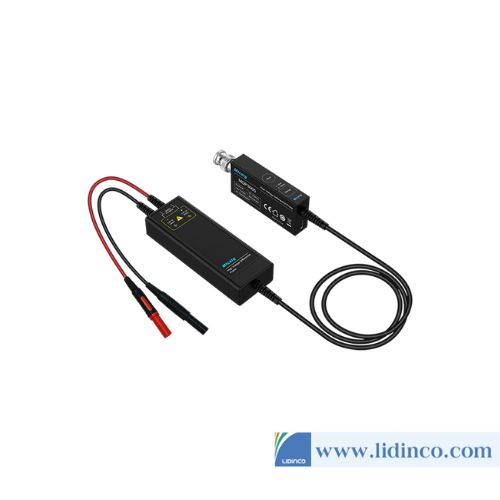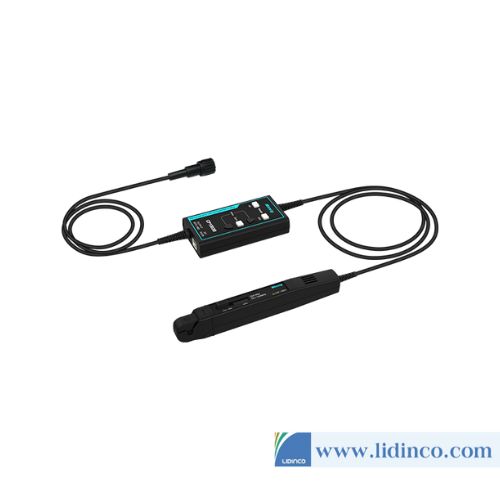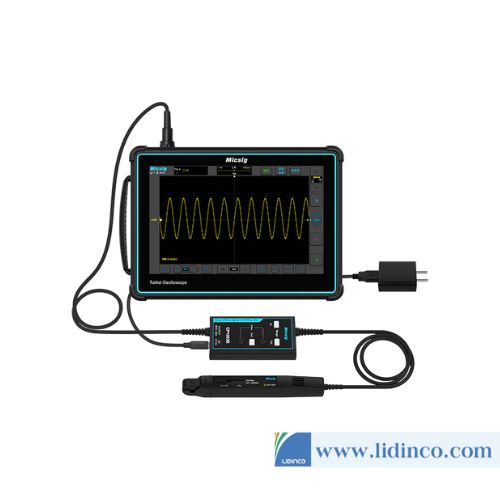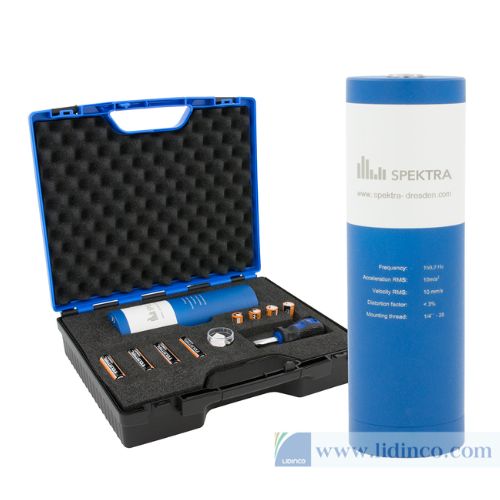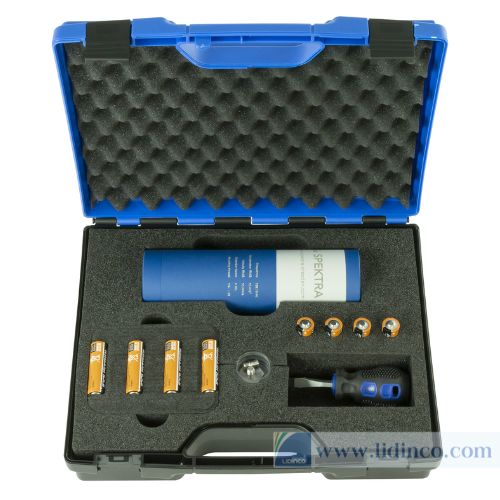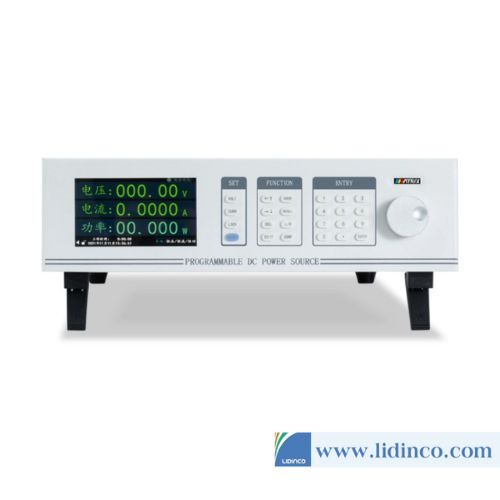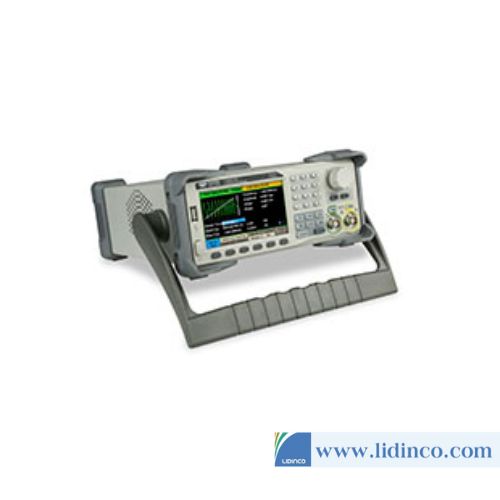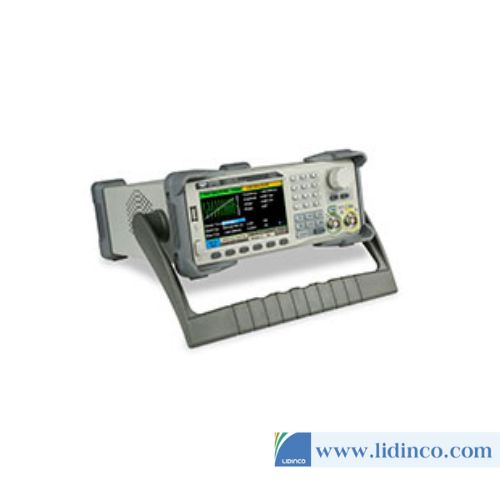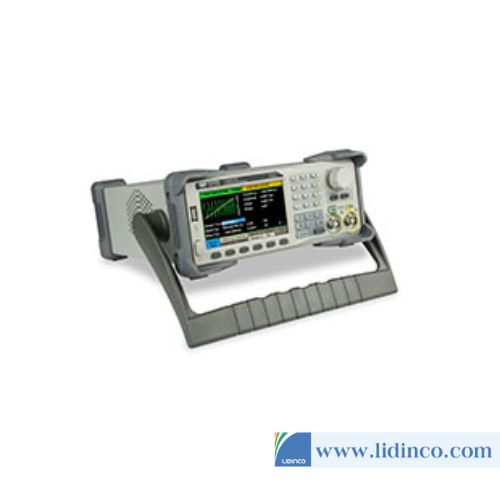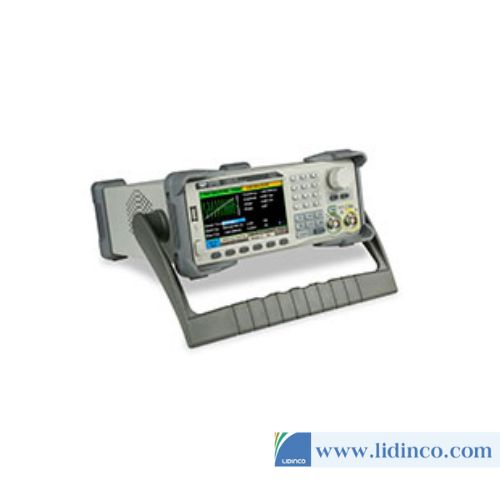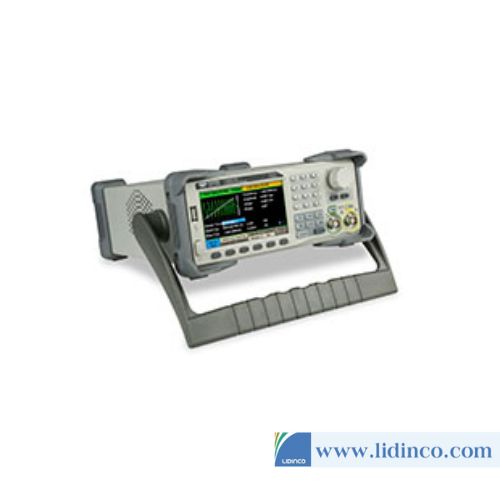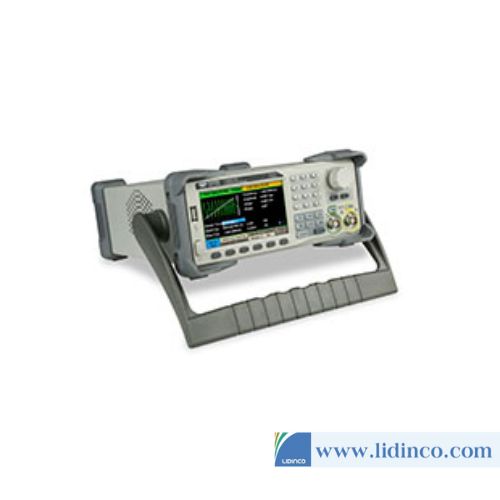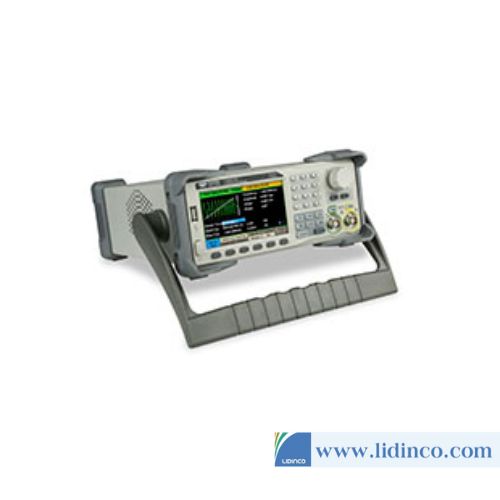Digital Oscilloscope LeCroy WavePro 725Zi-A 2.5 GHz, 4 CH
Hotline: +84 906 988 447
Head Office: Ho Chi Minh City
- Tel: +84 2839 778 269 / 3601 6797
- Email: sales@lidinco.com
- Add: 487 Cong Hoa Street, Tan Binh Ward, Ho Chi Minh City, Vietnam
Office: Bac Ninh City
- Tel: +84 222 730 0180
- Email: bn@lidinco.com
- Add: 184 Binh Than Street, Vo Cuong Ward, Bac Ninh, Vietnam
-
 Technical Counseling
100% Free
Technical Counseling
100% Free
-
 Free Shipping
For 3.000.000vnd Order
Free Shipping
For 3.000.000vnd Order
Data is being updated
Features:
Freedom from Limitations
WavePro 7 Zi-A excels in the way it offers general purpose utility never before seen in oscilloscopes from 1.5 to 6 GHz. All WavePro 7 Zi-A oscilloscopes contain selectable 50 Ω and 1 MΩ input capability. The 4 and 6 GHz models include both ProBus and ProLink input types which means eight probes can be attached and then multiplexed from the front panel or by remote control. The result— it's easy to hook up a passive probe even on 4 or 6 GHz models—no more frustration and hassle of trying to find a 1 MΩ input adapter. Plus, any existing investment in Teledyne LeCroy probes, such as current probes, single-ended or differential active probes, or high voltage probes, is fully leveraged. Perfect.
More Triggers Isolate More Problems More Effectively
A powerful combination of high bandwidth Edge and 10 different SMART triggers allow you to isolate the problem quickly and begin to focus on the cause. Most SMART triggers allow triggering on pulse widths or features as small as 200 ps. A high-speed serial trigger enables triggering on up to 2.7 Gb/s serial patterns of up to 80-bits in length. Built-in hardware clock recovery is also included.
TriggerScan™
TriggerScan uses high-speed hardware triggering capability with persistence displays to capture only the signals of interest and provide answers up to 100X faster that other methods. Traditional fast display update modes work best on frequent events occurring on slow edge rates while TriggerScan excels in finding infrequent events on fast edge rates.
WaveScan™ Advanced Search and Analysis Finds Problems that Triggers Won't Find
The best trigger won't find all unusual events—a more powerful capability is sometimes needed. WaveScan provides the ability to locate unusual events in a single capture (i.e., capture and search) or "scan" for an event in many acquisitions over a long period of time. Select from more than 20 search modes (frequency, rise time, runt, duty cycle, etc.), apply a search condition and begin scanning. When an event is found, WaveScan highlights the error on screen and displays a table listing the errors.
Fully Integrated Mixed Signal Oscilloscope (4+36) Option
Add Mixed Signal Oscilloscope (MSO) operation using the MS Series mixed signal options. These convenient add-ons connect to the Teledyne LeCroy LBUS and quickly and simply provide capability to acquire up to 36 digital lines time-correlated with analog waveforms. No time is wasted in trying to learn how to connect, synchronize or operate a complicated logic analyzer since the MSOs are already completely integrated into the scope operation. In addition to acquiring digital lines, they are also helpful for monitoring low-speed signals, such as serial data clock, data, and chip select signals, thus preserving the analog channels for higher speed requirements.
Teledyne LeCroy has found a way to make long acquisition memory seamless and pain free to use. The WavePro 7 Zi Series' proprietary X-Stream II architecture supports capturing, zooming, measuring and analyzing multiple waveforms at 256 Mpts deep. What you experience is performance gains of 10–20X over what is available today. Whether looking at the acquired signal or while analyzing several screens of statistics, tracking a frequency or identifying complex patterns the WavePro 7 Zi is designed to perform.
The first time you use the Zi oscilloscope you will experience responsiveness that you've never seen before. Acquiring and manipulating the longest record lengths and the most complex WaveShape Analysis are all easily handled at the same time. Whether you use the front panel or choose to make adjustments with a mouse or the touch screen, the system performs.
Designed for long memory operation and responsiveness X-Stream II technology enables high throughput of data—even when the oscilloscope is performing multiple 100 Mpts waveforms. It does so by eliminating the trade-offs between long memory length and quick processing. WavePro 7 Zi's proprietary architecture design is augmented with an Intel® Core™ 2 Quad processor, high-speed serial data buses, a 64-bit OS and up to 8 GB of RAM.
By using variable waveform segment lengths to improve the CPU cache memory efficiency the WavePro 7 Zi is designed for the fastest processing of long waveform records. The result—10-20 times faster processing compared to other oscilloscopes.
By dynamically allocating buffers where to maximize memory availability the WavePro 7 Zi Series embodies the fastest front panel responsiveness. Waveform previewing shows interim calculation results while a built in processing abort make front panel control changes instant by stopping the current process and allowing new waveforms to be positioned or zoomed—all without a lengthy recalculation.
DFP2 lets you implement Finite or Infinite Impulse Response filters to eliminate undesired spectral components, such as noise, and enhances your ability to examine important signal components. You can choose from a standared set of FIR or IIR filters. You can also design your own filters.
The spectrum converts the controls of your oscilloscope to those of a spectrum analyzer. Adjust the frequency span, resolution and center frequency. Apply filtering to your signal and watch the frequency signature change in real time. A unique peak search labels the spectral components and presents frequency and level in a table. Touch any line jump to that peak.
The Mixed Signal option allows the WavePro 7 Zi to convert to a mixed signal oscilloscope with up to 36 digital channels. Channels are sampled at 2 GS/s up to 50 Mpts/Ch. Having up to 36 digital inputs timesynchronized with four analog channels extends the oscilloscope's use to provide a total system view.
Specialized timing parameters measure period, cycle-cycle, half period, width, etc. jitter on a variety of signals. Use the three views of jitter (statistical, time, and frequency) to understand root cause and to debug problems. Histograms provide understanding of statistical distributions. Tracks provide a means to show time-correlated peaks of jitter, and compare to other signals. FFTs provide the ability to debug root causes of high in-circuit jitter.
Vertical System | |
| Analog Bandwidth (Max) | 2.5 GHz |
| Analog Bandwidth @ 50 Ω (-3 dB) (ProBus Input) | 2.5 GHz (≥10 mV/div) |
| Analog Bandwidth @ 1 MΩ (-3 dB) (ProBus Input) | 500 MHz (typical) (≥5 mV/div) |
| Rise Time (10-90%, 50 Ω) | 150 ps (typical, flatness mode) |
| Rise Time (20-80%, 50 Ω) | 113 ps (typical, flatness mode) |
| Input Channels | 4 |
| Bandwidth Limiters | 20 MHz, 200 MHz, 1 GHz |
| Input Impedance | 50 Ω+/-2% or 1 MΩ||16pF, 10 MΩ || 11 pF with supplied Probe |
| Input Coupling | ProBus Inputs - 1 MΩ: AC, DC, GND; 50 Ω: DC, GND |
| Maximum Input Voltage | 50 Ω: ±5 Vrms 1 MΩ: 250 V max. (peak AC: < 10 kHz + DC) |
| Channel-Channel Isolation | DC to 2 GHz: 46 dB (>200:1) 2 to 4 GHz: 34 dB (>50:1) 4 to 6 GHz: 26 dB (>20:1) (For any two ProLink input channels, same v/div settings, typical) |
| Vertical Resolution | 8 bits; up to 11 bits with enhanced resolution (ERES) |
| Sensitivity | 50 Ω: 2 mV-1 V/div, fully variable (2-9.99 mV/div via zoom); 1 MΩ: 1 mV-10 V/div, fully variable |
| DC Vertical Gain Accuracy (Gain Component of DC Accuracy) | ±1% F.S. (typical), offset at 0V; ±1.5% F.S. (test limit), offset at 0V |
| Vertical Noise Floor (50 mV/div) | 1.2 mVrms (typical) |
| Offset Range | 50 Ω (ProBus) ±750 mV @ 10 mV - 170 mV/div ±4 V @ 172 mV - 1 V/div1 MΩ ±1 V @ 2 mV - 128 mV/div ±10 V @ 130 mV - 1.28 V/div ±100 V @ 1.3 V - 10 V/div |
| DC Vertical Offset Accuracy | ±(1.5% of offset setting + 1.5% F.S. + 1 mV) (typical) ±(1.5% of offset setting + 2.5% F.S. + 2 mV) (test limit) |
Horizontal System | |
| Timebases | Internal timebase common to 4 input channels; an external clock may be applied at the auxiliary input |
| Time/Division Range | 20 ps/div-3200 s/div (Real-Time Mode: 20 ps/div - 2000 s/div; RIS mode: 20 ps/div - 10 ns/div, user selectable at ≤10ns/div; Roll mode: 100 ms/div up to 3200 s/div, user selectable at ≥100 ms/div and ≤5 MS/s), depending on memory length |
| Clock Accuracy | < 1 ppm + (aging of 0.5ppm/yr from last calibration) |
| Sample Clock Jitter | up to 10µs Acquired Time Range: 100fsrms (Internal Timebase Reference)up to 3.2ms Acquired Time Range: 150fsrms (Internal Timebase Reference) |
| Delta Time Measurement Accuracy | √2*√((Noise/SlewRate)^2+(Sample Clock Jitter)^2 ) (RMS)+(clock accuracy*reading)(seconds) |
| Jitter Measurement Floor | √((Noise/SlewRate)^2+(Sample Clock Jitter)^2 ) secondsrms (TIE) |
| Jitter Noise Floor | 1.0 ps (TIE, typical) |
| Jitter Between Channels | <700fsrms (TIE, typical, measured at maximum bandwidth) |
| Trigger and Interpolator Jitter | ≤ 2 ps RMS (typical) <0.1 ps RMS (typical, software assisted) |
| Channel-Channel Deskew Range | ±9 x time/div. setting, 100 ms max., each channel |
| External Timebase Reference (Input) | 10 MHz; 50 Ω impedance, applied at the rear input |
| External Timebase Reference (Output) | 10 MHz; 50 Ω impedance, output at the rear |
| External Clock | 30 MHz-2 GHz, 50 Ω impedance, applied at the auxiliary input |
Acquisition System | |
| Single-Shot Sample Rate/Ch | 40 GS/s on 2 Ch 20 GS/s on 4 Ch |
| Random Interleaved Sampling (RIS) | 200 GS/s for repetitive signals (20 ps/div to 10 ns/div) |
| Maximum Trigger Rate | 1,000,000 waveforms/second (in Sequence Mode, up to 4 channels) |
| Intersegment Time | 1 µs |
| Standard Memory (4 Ch / 2 Ch / 1Ch) (Number of Segments) | 20M / 40M / 40M (4,500) |
| Memory Options (4 Ch / 2 Ch / 1Ch) (Number of Segments) | S-32 Option: 32M / 64M / 64M (15,000) M-64 Option: 64M / 128M / 128M (15,000) L-128 Option: 128M / 256M / 256M (15,000) |
Acquisition Processing | |
| Averaging | Summed averaging to 1 million sweeps; continuous averaging to 1 million sweeps |
| Enhanced Resolution (ERES) | From 8.5 to 11 bits vertical resolution |
| Envelope (Extrema) | Envelope, floor, or roof for up to 1 million sweeps |
| Interpolation | Linear or Sin x/x |
Triggering System | |
| Modes | Normal, Auto, Single, and Stop |
| Sources | Any input channel, Aux, Aux/10, or line; slope and level unique to each source (except line trigger) |
| Coupling Mode | DC, AC, HFRej, LFRej |
| Pre-trigger Delay | 0-100% of memory size (adjustable in 1% increments of 100 ns) |
| Post-trigger Delay | 0-10,000 divisions in real time mode, limited at slower time/div settings or in roll mode |
| Hold-off by Time or Events | From 2 ns up to 20 s or from 1 to 99,999,999 events |
| Internal Trigger Range | ±4.1 div from center (typical) |
| Trigger Sensitivity with Edge Trigger ProBus Inputs | 2 div @ < 2.5 GHz 1.5 div @ < 1.25 GHz 1.0 div @ < 200 MHz (for DC, AC, LFRej coupling, ≥ 10 mV/div, 50 Ω ) |
| External Trigger Sensitivity, (Edge Trigger) | 2 div @ < 1 GHz 1.5 div @ < 500 MHz 1.0 div @ < 200 MHz (for DC, AC, LFRej coupling) |
| Max. Trigger Frequency, SMART Trigger | 2.0 GHz @ ≥ 10 mV/div (minimum triggerable width 300 ps) |
| External Trigger Input Range | Aux (±0.4 V); Aux/10 (±4 V) |
Basic Triggers | |
| Edge | Triggers when signal meets slope (positive, negative, or either) and level condition. |
| Window | Triggers when signal exits a window defined by adjustable thresholds |
| TV-Composite Video | Triggers NTSC or PAL with selectable line and field; HDTV (720p, 1080i, 1080p) with selectable frame rate (50 or 60 Hz) and Line; or CUSTOM with selectable Fields (1-8), Lines (up to 2000), Frame Rates (25, 30, 50, or 60 Hz), Interlacing (1:1, 2:1, 4:1, 8:1), or Synch Pulse Slope (Positive or Negative). |
SMART Triggers | |
| State or Edge Qualified | Triggers on any input source only if a defined state or edge occurred on another input source. Delay between sources is selectable by time or events. |
| Qualified First | In Sequence acquisition mode, triggers repeatably on event B only if a defined pattern, state, or edge (event A) is satisfied in the first segment of the acquisition. Holdoff between sources is selectable by time or events. |
| Dropout | Triggers if signal drops out for longer than selected time between 1 ns and 20 s. |
| Pattern | Logic combination (AND, NAND, OR, NOR) of 5 inputs (4 channels and external trigger input). Each source can be high, low, or don't care. The High and Low level can be selected independently. Triggers at start or end of the pattern. |
SMART Triggers with Exclusion Technology | |
| Glitch | Triggers on positive or negative glitches with widths selectable as low as 500ps (depending on oscilloscope bandwidth) to 20 s, or on intermittent faults. |
| Width (Signal or Pattern) | Triggers on positive, negative, or both widths with widths selectable as low as 500ps (depending on oscilloscope bandwidth) to 20 s, or on intermittent faults. |
| Interval (Signal or Pattern) | Triggers on intervals selectable between 1 ns and 20 s. |
| Timeout (State/Edge Qualified) | Triggers on any source if a given state (or transition edge) has occurred on another source. Delay between sources is 1 ns to 20 s, or 1 to 99,999,999 events. |
| Runt | Trigger on positive or negative runts defined by two voltage limits and two time limits. Select between 1 ns and 20 ns. |
| Slew Rate | Trigger on edge rates. Select limits for dV, dt, and slope. Select edge limits between 1 ns and 20 ns. |
| Exclusion Triggering | Trigger on intermittent faults by specifying the expected behavior and triggering when that condition is not met |
Cascade (Sequence) Triggering | |
| Capability | Arm on "A" event, then Trigger on "B" event. Or Arm on "A" event, then Qualify on "B" event, and Trigger on "C" event. |
| Types | Cascade A then B: Edge, Window, Pattern (Logic) Width, Glitch, Interval, Dropout, or Measurement. Measurement can be on Stage B only. Cascade A then B then C (Measurement): Edge, Window, Pattern (Logic), Width, Glitch, Interval, Dropout, or Measurement. Measurement can be on Stage C only. Cascade A then B then C: Edge, Window, Pattern (Logic) |
| Holdoff | Holdoff between A and B or B and C is selectable by time (1ns to 20s) or number of events. Measurement trigger selection as the last stage in a Cascade precludes a holdoff setting between the prior stage and the last stage. |
High Speed Serial Protocol Triggering | |
| Data Rates | (Option WPZi-MSPT) 100 Mb/s - 1.25 Gb/s |
| Pattern Length | 80 bits, NRZ or 8b10b |
| Clock and Data Outputs | 400mVp-p (typical) AC coupled |
| Clock Recovery Jitter | 2 ps rms + 0.3% Unit Interval rms for PRBS data patterns with 50% transition density |
| Hardware Clock Recovery Loop BW | PLL Loop BW = Fbaud/5500, 100 Mb/s to 2.488 Gb/s (typical) |
Low Speed Serial Protocol Triggering (Optional) | |
| Optionally available | I2C, SPI (SPI, SSPI, SIOP), UART-RS232, CAN, LIN, FlexRay, MIL-STD-1553, AudioBus |
Measurement Trigger | |
| Measurement Trigger Capability | Select from a large number of measurement parameters trigger on a measurement value with qualified limits. Can be used as only trigger or last event in a Cascade Trigger. |
Color Waveform Display | |
| Type | Color 15.3" flat panel TFT-Active Matrix LCD with high resolution touch screen |
| Resolution | WXGA; 1280 x 768 pixels. |
| Number of traces | Display a maximum of 16 traces (up to 40 with some software options). Simultaneously display channel, zoom, memory and math traces. |
| Grid Styles | Auto, Single, Dual, Quad, Octal, X-Y, Single+X-Y, Dual+X-Y |
| Waveform Representation | Sample dots joined, or sample dots only |
Internal Waveform Memory | |
| Internal Waveform Memory | 12 active waveform memory traces (M1-M12) store 16 bit/point full length waveforms. Waveforms can be stored to any number of files limited only by the data storage media capacity. |
Integrated Second Display | |
| Type | Supports touch screen integration of user-supplied second display with split-grid capability. (Note: touch screen driver for second display may not be a Fujitsu driver) |
| Resolution | Determined by display chosen by user |
LeCroy WaveStream™ Fast Viewing Mode | |
| Intensity | 256 Intensity Levels, 1-100% adjustable via front panel control |
| Types | Select analog or color-graded |
| Number of Channels | up to 4 simultaneously |
| Max Sampling Rate | 40 GS/s (20 GS/s for WavePro 715Zi without WPZi-1.5GHZ-4X20GS option) |
| Persistence Aging | Select from 500 ms to Infinity |
| Waveforms/second (continuous) | up to 2500 Waveforms/second |
| Operation | Front panel toggle between WaveStream ON (Analog), ON (Color) and OFF |
Analog Persistence Display | |
| Analog and Color-Graded Persistence | Variable saturation levels; stores each trace's persistence data in memory |
| Persistence Types | Select analog, color, or three-dimensional |
| Trace Selection | Activate persistence on all or any combination of traces |
| Persistence Aging | Select from 500 ms to infinity |
| Sweep Display Modes | All accumulated, or all accumulated with last trace highlighted |
High Speed Digitizer Output (Option) | |
| Type | LeCroy LSIB |
| Transfer Rate | up to 325 Mpt/s (Maximum) |
| Output Protocol | PCI Express, Gen 1 (4 lanes utilized for data transfer) |
| Control Protocol | TCP/IP |
| Command Set | Via Windows Automation, or via LeCroy Remote Command Set |
Processor/CPU | |
| Type | Intel® CoreTM i7-2600 Quad, 2.6 GHz (up to 3.8 GHz in Turbo mode) (or better) |
| Processor Memory | 8 GB standard for STD memory (20 Mpt), S-32 and M-64 memory options 16 GB standard for L-128 memory options Up to 32 GB optional |
| Operating System | Microsoft Windows® 7 Professional Edition (64-bit) |
| Real Time Clock | Date and time displayed with waveform in hardcopy files. SNTP support to synchronize to precision internal clocks. |
Zoom Expansion Traces | |
| Zoom Expansion Traces | Display up to 12 Zoom and 12 Math/Zoom traces |
Setup Storage | |
| Front Panel and Instrument Status | Store to the internal hard drive, over the network, or to a USB-connected peripheral device. |
Interface | |
| Remote Control | Via Windows Automation, or via LeCroy Remote Command Set |
| Network Communication Standard | VXI-11 or VICP, LXI Class C (v 1.2) Compliant |
| GPIB Port | Supports IEEE - 488.2 |
| LSIB Port (optional) | Supports PCIe Gen1 x4 protocol with LeCroy supplied API |
| Ethernet Port | Supports 10/100/1000BaseT Ethernet interface (RJ45 port) |
| USB Ports | minimum 6 total (incl. 3 front panel) USB 2.0 ports support Windows compatible devices |
| External Monitor Port | 15 pin D-Type WXGA compatible to support customer-supplied external monitor. Includes support for extended desktop operation with second monitor. |
| Peripheral Bus | LeCroy LBUS standard |
Auxiliary Input | |
| Signal Types | For External Trigger Input |
| Coupling | 50 Ω: DC; 1 MΩ: AC, DC, GND |
| Max. Input Voltage | 50 Ω: 5 Vrms; 1 MΩ: 250 V (Peak AC < 10 kHz + DC) |
Auxiliary Output | |
| Signal Types | Select from calibrator, control signals or Off |
| Output Signal | 500 Hz-5 MHz square wave or DC level; 2.5mV to 500 mV into 50 Ω (5 mV-1 V into 1 MΩ) |
| Control Signals | Trigger enabled, trigger out, pass/fail status, off |
| Connector Type | BNC, located on front |
Automatic Setup | |
| Auto Setup | Automatically sets timebase, trigger, and sensitivity to display a wide range of repetitive signals |
| Find Vertical Scale | Automatically sets the vertical sensitivity and offset for the selected channel to display a waveform with the maximum dynamic range |
General | |
| Auto Calibration | Ensures specified DC and timing accuracy is maintained for 1 year minimum. |
Probes | |
| Probes | Qty. (4) ÷10 Passive Probes |
| Probe System | Probus (and ProLink on 4-6 GHz models). Automatically detects and supports a variety of compatible probes |
| Scale Factors | Automatically or manually selected depending on probe used |
| Calibration Output | Cal Output: 1kHz square wave, 1Vp-p (typical), output to probe hook. Fast Edge Output: 5MHz square wave, 450mVp-p (typical), 110ps rise time, output to SMA connector, AC Coupled. |
Power Requirements | |
| Voltage | 100-240 VAC ±10% at 45-66 Hz; 100-120 VAC ±10% at 380-420 Hz; Automatic AC Voltage Selection; Installation Category 300 V CAT II |
| Max. Power Consumption | 800 W/800 VA |
Environmental and Safety | |
| Temperature (Operating) | +5 °C to +40 °C including CD-RW/DVD-ROM drive |
| Temperature (Non-Operating) | -20 °C to +60 °C |
| Humidity (Operating) | 5% to 80% relative humidity (non-condensing) up to +31 °C. Upper limit derates to 50% relative humidity (non-condensing) at +40 °C. |
| Humidity (Non-Operating) | 5% to 95% relative humidity (non-condensing) as tested per MIL-PRF-28800F |
| Altitude (Operating) | Up to 10,000 ft. (3048 m) at or below +25 °C |
| Altitude (Non-Operating) | Up to 40,000 ft. (12,192 m) |
| Random Vibration (Operating) | 0.5 grms 5 Hz to 500 Hz, 10 minutes in each of three orthogonal axes, 30 minutes total |
| Random Vibration (Non-Operating) | 2.0 grms 5 Hz to 500 Hz, 10 minutes in each of three orthogonal axes, 30 minutes total |
| Functional Shock | 20 g peak, half sine, 11 ms pulse, 3 shocks (positive and negative) in each of three orthogonal axes, 18 shocks total |
Physical Dimensions | |
| Dimensions (HWD) | 14"H x 18.4"W x 11.4"D (355 x 467 x 289 mm) |
| Weight | 40.5 lbs. (18.4 kg) |
| Shipping Weight | 62 lbs. (28.2 kg) |
Accessories

-
Bandwidth:
-
Sampling Rate:
-
Waveform Length:
-
Channels:
Micsig TO1152 150MHz Tablet Oscilloscope

-
Frequency:
-
Sampling Rate:
-
Waveform Length:
-
Vertical Resolution:
Function / Arbitrary Waveform Generator Lecroy T3AFG500

-
Frequency:
-
Sampling Rate:
-
Waveform Length:
-
Vertical Resolution:
Function / Arbitrary Waveform Generator Lecroy T3AFG350

-
Frequency:
-
Sampling Rate:
-
Waveform Length:
-
Vertical Resolution:
Function / Arbitrary Waveform Generator Lecroy T3AFG200

-
Frequency:
-
Sampling Rate:
-
Waveform Length:
-
Vertical Resolution:
Function / Arbitrary Waveform Generator Lecroy T3AFG120

-
Frequency:
-
Sampling Rate:
-
Waveform Length:
-
Vertical Resolution:
Function / Arbitrary Waveform Generator Lecroy T3AFG80

-
Frequency:
-
Sampling Rate:
-
Waveform Length:
-
Vertical Resolution:
Function / Arbitrary Waveform Generator Lecroy T3AFG60

-
Frequency:
-
Sampling Rate:
-
Waveform Length:
-
Vertical Resolution:
Function / Arbitrary Waveform Generator Lecroy T3AFG30

-
Frequency:
-
Sampling Rate:
-
Waveform Length:
-
Vertical Resolution:
Function / Arbitrary Waveform Generator Lecroy T3AFG40
Please login to write review!



